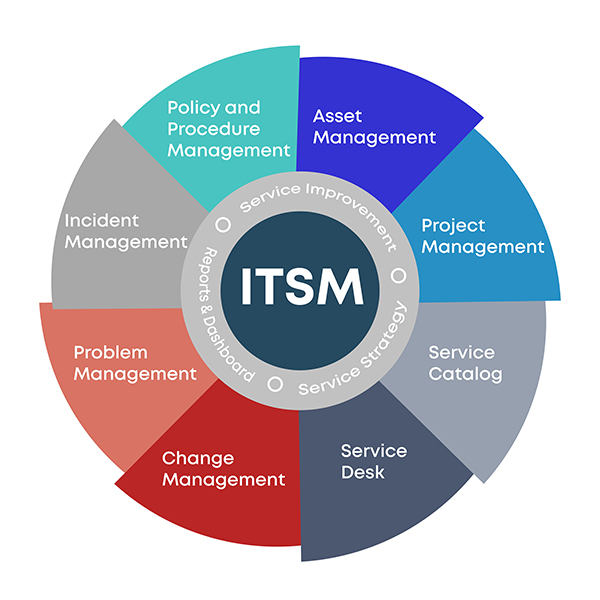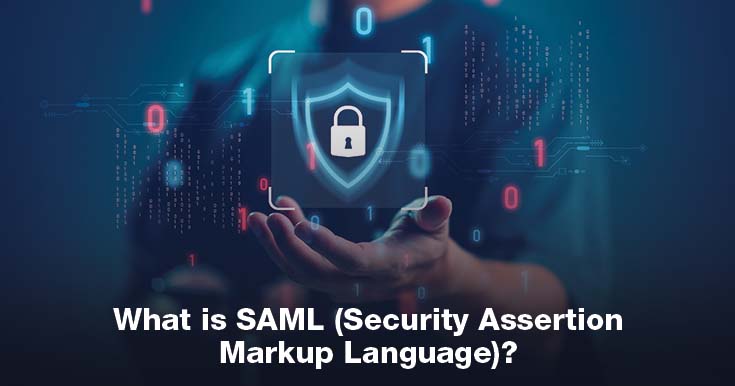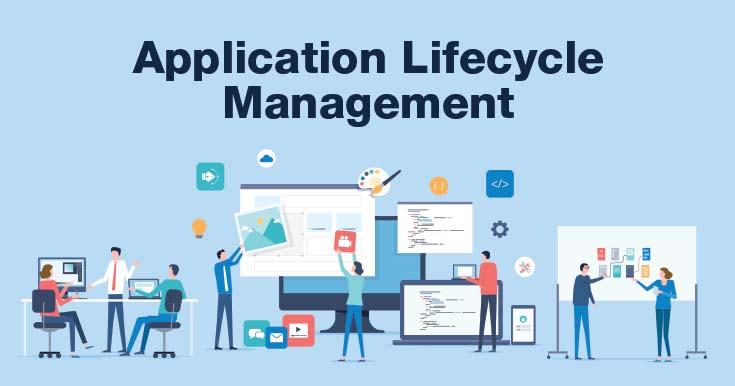What Is IT Infrastructure Library (ITIL)? An Overview to Its Process & Framework

What Is ITIL?
ITIL is a set of precise guidelines aimed at assisting software professionals in providing top-notch IT services. These ITIL process guidelines represent the best practices that have been observed, gathered, and put together over time to ensure the delivery of high-quality IT services.
The ITIL process enables organisations to manage risk, establish cost-effective practices, and enhance customer relations. Ultimately, these lead to the creation of a stable IT environment for businesses. ITIL encompasses a range of well-known IT services, including Cloud services, backup, network security, data processing and storage, managed print services, IT consulting, Help desk support, IOT, etc.
How Does ITIL Process Work?
The 5 stages of the service lifecycle work together to make it possible for business services and IT to deliver and communicate more easily. This comprises:
1. SERVICE STRATEGY
The service strategy stage enables organizations to plan and establish company objectives to satisfy client wants and needs.
2. SERVICE DESIGN
This is the stage of service management process designing. This includes various elements such as technology, products, processes, infrastructure, and functions.
3. SERVICE TRANSITION
This stage starts with the need to consider the risk and impact of any change. Maintaining present functionality while implementing new organisational changes with the least amount of risks is the major goal of transition planning and support.
4. SERVICE OPERATION
Service daily operational tasks would come under the operating stage. This phase includes monitoring infrastructure and application-related services. These help businesses meet the need of their clients and employees.
5. CONTINUAL SERVICE IMPROVEMENT
The quality check of continuous service improvement assures that improvement is the final aim throughout the lifecycle. Additionally, this comes under service continuity management.
What are ITIL Processes and Frameworks?
ITIL is defined as a set of best-practice publications for IT service management. ITIL provides guidance on how to deliver high-quality IT services as well as the protocols, skills, and other capabilities required to support them.
Additionally, ITIL processes outlines tasks, and checklists that are not exclusive to any one organization or technology. ITSM software and knowledge management methodologies can use these procedures.
Core Pillars of ITIL Process
Although ITIL differs from other frameworks in a number of important ways, there are at least three essential pillars that have remained constant throughout all of the updates and versions. These include:
ITIL CHANGE MANAGEMENT
The ideal definition of ITIT change management is “the procedure that oversees the entire lifecycle of changes, allowing for beneficial alterations to IT services while minimizing disruptions.”
Ultimately, effectively managing a change requires finding a middle ground between the need for speed and the proper handling of inherent risks.
In addition to handling daily and significant changes, organization employ the chain management process is for planned and urgent adjustments. Before implementing any new or planned change, change management establishes precise responsibilities and procedures, such as who can and how to Request for Change (RFC), who belongs to a Change Advisory Board (CAB), and who is responsible for carrying out and managing the change.
ITIL INCIDENT MANAGEMENT
An unforeseen service disruption or decline in service quality is referred to as an Incident. End-users typically report incidents via phone, email, or an IT self-service portal.
An incident is an issue that can be negatively impacted by your organization’s technology- or technology-based services- not functioning as they should and harming one or more employees, clients, business services or processes, third parties, or other entities.
ITIL PROBLEM MANAGEMENT
Despite their differences, Problem and Incident management are both important parts of ITIL process.
Problems arise from incidents, but incidents themselves do not transform into problems. Instead, ITSM software represents a problem as a unique element that develops from recurrent incidents. A problem is recorded separately, and it could be an occurrence that persists over time, such as a laptop experiencing repeated hard disk failures despite replacements.
Alternatively, it could be a widespread incident where the fundamental reason seems to be a production issue. In most cases, problems are found by looking at incident logs and other ITSM data.
Benefits of ITIL Process
- Improved Service Quality: It provides a structure for establishing consistent service delivery processes, improving the quality of services, and increasing customer satisfaction.
- Enhanced Efficiency: ITIL processes are designed to enable businesses to provide services quickly and inexpensively, ensuring they are effective and efficient.
- Better Communication: It promotes better communication between various organization departments, reducing silos and fostering better teamwork.
- Increased Customer Satisfaction: By concentrating on or fulfilling customer requirements and expectations, it can raise client satisfaction and loyalty.
- Continuous Improvement: Through routine reviews and analyses of service delivery procedures, ITIL encourages continuous improvement, which over time improves service quality.

ITIL v1
The initial ITIL process focuses on software distribution and control, change management, and service support processes including help desk management. Additionally, it addressed important aspects such as capacity management, contingency planning, availability management, and cost management, which remain highly applicable today.
Since the early 1990s, various large companies and government agencies worldwide have embraced this framework to enhance their IT services and delivery capabilities. As IT developed and advanced, so did ITIL as it gained in popularity. The CCTA and the Office for Government Commerce (OGC) combined in the year 2000, and that same year, Microsoft Operations Framework (MOF), which was based on ITIL became the first “child standard”.
ITIL v2
ITIL process of second version, publishes in 2001, aimed to streamline content by eliminating duplicates, ensuring topic consistency, and introducing new IT concepts. It comprises essential aspects such as problem management, financial management of IT assets, release management, and security management. These pieces remain highly relevant today.
ITIL V2 is one that introduced the concepts of call centers and desks, which compared and discussed three different service desk structures: local service desks, central service desks, and virtual service desks. The most frequently used IT service management method by enterprises over the ensuing years was ITIL.
ITIL v3
ITIL v3 was released in 2007. This approach embraced an ITIL process perspective on service management and placed significant emphasis on IT-business integration. This upgrade comprised 26 processes and functions, grouped into 5 volumes. It consists of service strategy service transition, service operation, service design, and continual service improvement.
The scope of ITIL v3 was greatly increased, with nearly three times as many processes and functions as before, as well as additional dimensions and viewpoints. It introduced novel elements such as service assets, business case development, service value definition, and information security management. In the volumes dedicated to service operation and service design, additional subjects were introduced, including access management, request fulfilment, and application management.
ITIL v4
The most recent version of the framework, ITIL 4 was launched in February 2019. It serves as a comprehensive guide for organizations to effectively manage their information technology in the context of digital transformation. It emphasizes value creation for customers, moving beyond mere service delivery. While the foundation book is already available, the authorities have to release it in the latter half of 2019.
A service, in accordance with ITIL process, provides value co-creation by facilitating desired outcomes for clients without recovering them to handle particular costs and risks. It defines service as:
“A means of enabling value co-creation by facilitating outcomes that customers want to achieve, without the customer having to manage specific costs and risks.”
The four facets of service management- organizations and people, information and technology, suppliers and partners, value streams and procedures- are also discussed in ITIL V4. It also introduces the ITIL service value system (SVS), which covers how various service delivery components work together to co-create value for customers. In other words, it will clarify the importance of cooperating with different techniques and working cooperatively to general value, as opposed to working in silos and inwardly optimizing. Generally speaking, ITIL v4 continues the lifecycle transformation process with a strong emphasis on value generation.
Certification In ITIL
In the IT industry, having knowledge and mastery of ITIL is important. Obtaining ITIL certification demonstrates to businesses and IT managers that you possess expertise as an ITIL practitioner. This achievement can lead to higher income, improved skill sets, and enhanced knowledge and credibility. Additionally, for people working in the IT sector, certification is a relatively low-risk endeavour with a high potential return on investment.
For ITIL v3 and v4, there are multiple levels of certifications.
The ITIL v3 Certification level includes:
- Foundation Level
- Practitioner Level
- Intermediate Level
- Expert Level
- Master Level
ITIL v3 Foundation exam authorities recommend that candidates take the ITIL 4 Foundation exam right away to keep their skills up to date. Intermediate Candidates have the option of acquiring 17 v3 credits, which allows them to upgrade to ITIL4 with just one course and one exam.
ITIL 4’s Certification Scheme is different from ITIL v3. It includes:
- Foundation
- ITIL 4 Managing Professional
- ITIL 4 Strategic Leader
- Master
There are two methods to obtain ITIL certification. You have two options for taking the exams: whether with an Accredited Training Organization (ATO) at the training course or studying privately and scheduling the exam on your own.
ITIL vs ITSM
IT Service Management, or ITSM encompasses a structured set of activities directed by policies and processes to design, plan, deliver, and control IT services for customers. ITSM software solutions often facilitate this.
For ITSM to function seamlessly, it should be based on uniform rules and compromised practices, not a random assortment of tools and rules.
ITIL process serves as the language used within ITSM, representing a cohesive set of best practices and an accepted approach.
ITIL serves as the most widely used framework for ITSM. Other ITSM software companies, like Microsoft Operations Framework (MOF), Control Objectives for Information and Related Technologies (COBIT), and Business Process Framework (eTOM), also utilize it. Additionally, frameworks like DevOps extend beyond the general IT department. Additionally, frameworks like DevOps extend beyond the general IT department.
Common Mistakes to Avoid In ITIL Process
Mistake #1: Extremely Aggressive Schedules & Expectations
One prevalent mistake in ITIL implementation is setting overly ambitious schedules and expectations. It is natural to want to desire quick results and value from the ITIL investment. Though we must be careful not to believe everything will go according to plan with no room for alterations or delays. It’s important to have a practical and adaptable mindset throughout the implementation phase.
Mistake #2: Fixation of Framework Instead of Outcomes
A common mistake with ITIL and other similar frameworks is to become overly preoccupies with the processes and structure, neglecting the focus on tangible business outcomes. While mastering the framework is important, it is useless if doesn’t produce the intended outcomes and value. To prevent this, make sure the entire ITIL team is aware of the targeted objectives and values from the beginning and works to achieve them.
Mistake #3: Lack of Clear Ownership
In the ITIL journey, it is crucial to establish clear ownership for each aspect of the initiative. To ensure the finest process design, which must include essential Workflow Automation, and to efficiently utilize the best human skills within the firm, process ownership should incorporate our most qualified professionals. Specific ownership and mentorship greatly influence the success of the ITIL implementation.
Mistake #4: Lack of Cultural Commitment
In ITIL implementation, cultural change holds equal importance to technological advancements. For resource allocation, overcoming obstacles, and accepting new goals, a strong culture alignment is essential. Without this dedication, the enterprise may encounter serious difficulties or perhaps complete failure.
Mistake #5: Thinking of ITIL as a Series of Individual Processes
Yes, ITIL has more than 25 components and procedures, but focusing on this alone is risky and misses the goal of ITIL.
Successful ITIL firms are aware that they need to adopt ITIL as a comprehensive framework aimed at providing value to customers. Nothing less is acceptable, and a focus on individual ITIL activities will only reinforce and propagate the traditional model of silos, which will ultimately hinder or completely prevent us from realizing the actual and essential future of IT and ITSM. Practicing local optimization may seem appealing to some, but IT suffers when this practice is implemented. However, ITIL as a comprehensive and dynamic system is truly a remarkable experience.
Why Choose DevTools as Your ITIL Process Partner?
Choosing Devtools as your ITIL partner offers:
- Expertise: Experienced professionals ensure a smooth ITIL implementation.
- Comprehensive Solutions: Tailored ITIL services, from training to ITSM software.
- Proven Track Record: Success in various industries adds value to your organization.
- Customer-Centric Approach: Collaborative solutions aligned with your goals.
- Continuous Support: Guiding you at every stage of your ITIL journey.
- Integration with Other Frameworks: Seamlessly integrating ITIL with DevOps and more.
- Innovation and Adaptability: Staying up-to-date with industry trends for your benefit.
FAQs
This includes service strategy, service design, service transition, service operation, and continual service improvement.
It refers to the specific sets of organizational resources and capabilities that are necessary for the effective application of ITIL concepts. These practices include Service Management, Incident Management, Change Management, Problem Management, and others to optimize IT service delivery.
The ITIL4 comprises five core modules: TIL Foundation (introductory level), ITIL Specialist: Create, Deliver and Support, ITIL Specialist: Drive Stakeholder Value, ITIL Specialist: High-velocity IT, and ITIL Strategist: Direct, Plan, and Improve.
It focuses on restoring regular service operations as quickly as possible after an incident occurs. To lessen the impact on business operations and maintain service continuity, it entails logging, categorizing, prioritizing, and resolving problems.
ITIL process management refers to the systematic planning, design, implementation, and monitoring of ITIL processes within an organization. In order to achieve better overall performance and customer satisfaction, it aims to optimize IT service delivery, improve efficiency and align IT operations with business objectives.




